One of my favorite starting points for longer term projects is bonsai that has been developed for some time but is no longer in good shape.
Neglect and infestation are two of the most common reasons why a bonsai no longer looks as good as it once did. Failure to repot or cut back a tree for several years can kill off interior branches and upset the balance of the silhouette. Insects and disease can cause similar damage within a single season.
As long as the trunk retains its interest and there is hope to repair or regrow primary branches, the tree can be remade.
Here’s a photo of a procumbens juniper that has been trained for a number of years as bonsai but neglected for the past few.
Neglected procumbens juniper
Despite having a slender trunk, the tree has interesting movement and deadwood features.
Deadwood near the base of the trunk
The other side of the trunk
The rest of the trunk has subtle movement with a few deadwood features along the way.
Trunk detail
Deadwood
You’ll also notice that the silhouette is undefined and that there is very little branch structure.
View from the other side
The work from here is clear – get the tree healthy and develop new branches.
Taking on the care of neglected bonsai can help us address the following questions:
- Can I help the tree regain vigor?
- Can I identify obvious improvements?
- Can I create foliage density?
- Can I feed the tree appropriately for the stage of development?
- Do I enjoy detailed wiring?
Working with neglected bonsai can be a lot of fun because although the challenges are clear, it can be easy to visualize the result of the effort.
Of course, some enthusiasts prefer working on trees that can be exhibited at any time. These trees too, however, have their own care requirements. More on that next week.
Subscribe to Bonsai Tonight
New Posts Delivered Every Tuesday and Friday

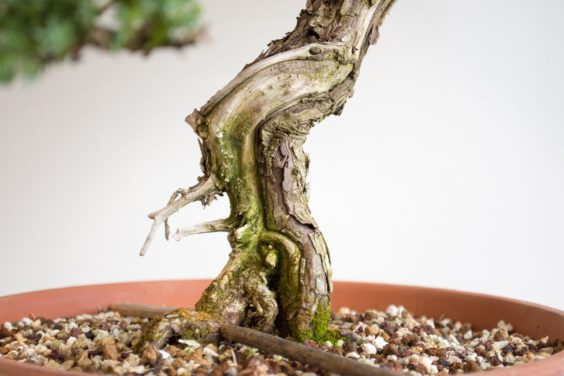
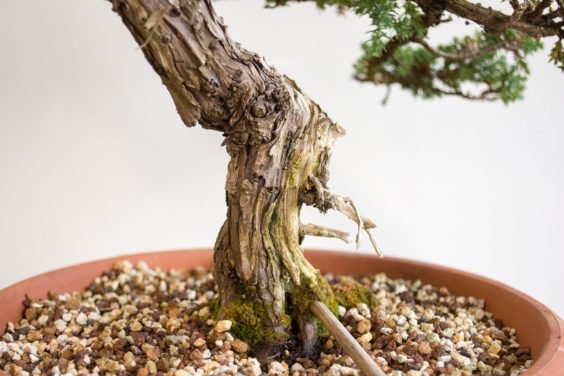
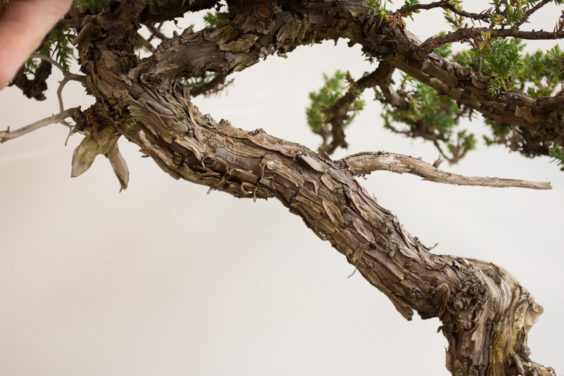
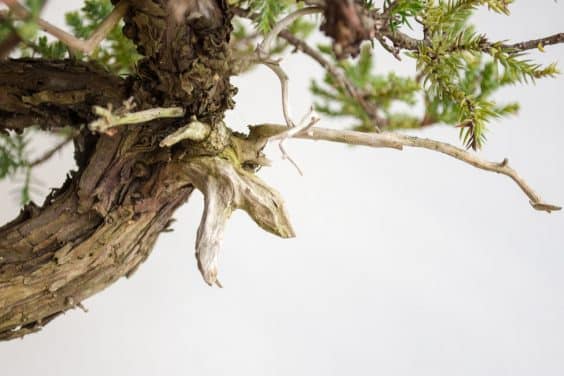
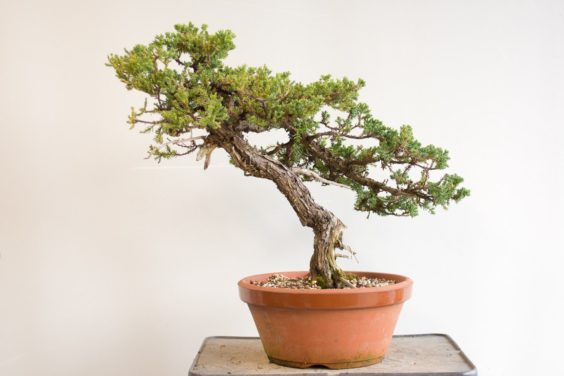
Bill DAniels says
Other questions you can ask?
Where within the tree is the harmony?
How do you effective recreate the movement in the tree?
Will negative space help the tree?
Our task is to explore the tree character through the transformation process in order to obtain an image of tree for the future.
Mike Miller says
I’ve a procumbens juniper that also suffered a decline in vigor. Although a different style, conditionally it looks just like yours (relatively sparse & desiccated). I’ve been frustrated for 3 years, trying to get it to regain its former vigor. I’ve been afraid to do any significant styling and/or pruning until and unless it regains said vigor. I’m in the PNW (just outside Seattle). Any recommendations?
Jonas Dupuich says
Hi Mike – that’s wise to hold off on the work until the tree gets healthier. My main question is about the soil. If 100% of the soil is good bonsai soil – no compacted organic masses at the core, good drainage throughout – then I’d double check for hard to spot insects like root aphids or the tiny white scale that procumbens junipers can get. I’d keep the tree in the sun and feed lightly. You can try foliar feeding too.
Mike Miller says
Thanks, Jonas. I don’t think white scale or root aphids to be the genesis of the problem. It does occasionally get attacked by red spider mites, but I spray periodically to keep those under control. About 4-5 years ago, I got a bit cavalier, and left it out in the PNW winter rain for the season, instead of tucking it under an eave (to control root moisture) as is its usual. The following summer, it began its decline. By the next spring, even though the tree was exceedingly weak (lost 75% of foliage), an emergency repot was in order. I suspect it got some root-rot from being wet all winter. I will continue to be patient, mist often, feed lightly, water sparingly, and give it as much light as my forested acre will permit. Thanks so much for your input, your enthusiasm, and your site.